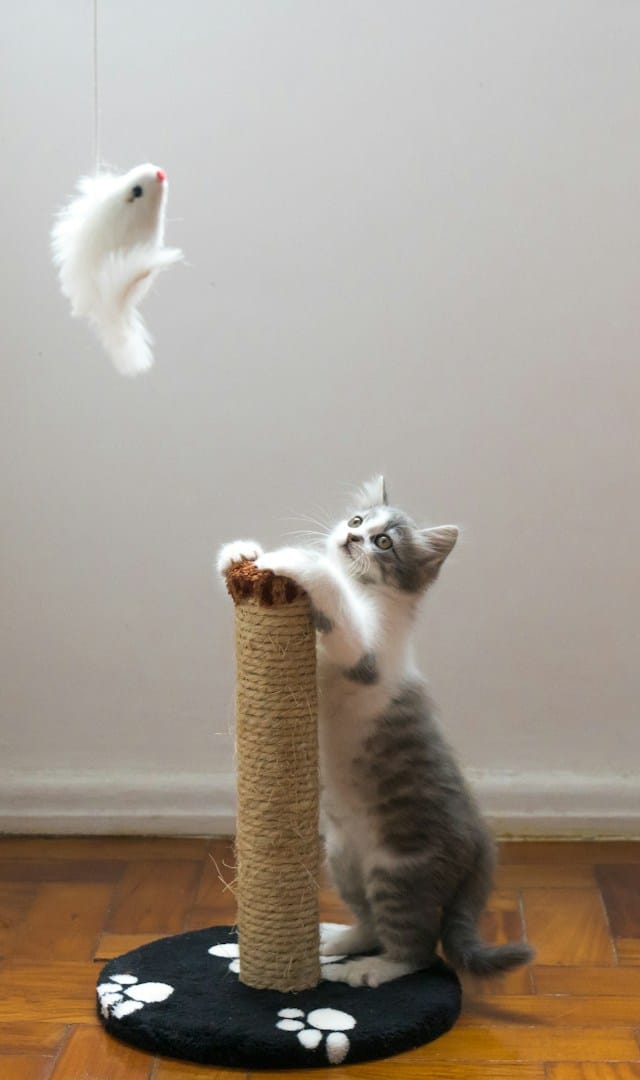As a pet owner, it’s essential to provide your furry friends with safe and engaging toys. These can promote their physical health, mental stimulation, and overall wellbeing. However, not all pet toys are created equal. Some may pose serious health risks if they’re made of hazardous materials or poorly designed. This comprehensive guide will walk you through choosing safe toys for your pet, ensuring they’re entertained, stimulated, and most importantly, protected.
Understanding Pet Toy Safety
Before diving into the types of toys to consider, it’s crucial to understand what makes a toy safe for your pet.
Cela peut vous intéresser : Understanding your cat’s meows
Many factors contribute to pet toy safety. For one, the toy’s size can significantly impact its safety. Small toys might be a choking hazard for larger pets, while toys too large might be difficult for smaller pets to handle, potentially leading to injuries.
Secondly, the materials used in manufacturing the toy play a crucial role. Toys made from non-toxic, durable materials are typically a safer option. Avoid toys with small, detachable parts that your pet could swallow.
En parallèle : The benefits of pets for children
Lastly, consider your pet’s behavior and chewing habits. Some pets are aggressive chewers and would quickly destroy a poorly made toy, increasing the risk of ingesting harmful parts.
Types of Safe Pet Toys
There is an array of pet toys available on the market, each designed to cater to different needs and behaviors.
Plush toys are often a favorite among pets, providing comfort and companionship. However, ensure these toys are well-made, with no small, detachable parts your pet could ingest.
Interactive toys, such as puzzles and treat-dispensing toys, are excellent for mental stimulation. They’re typically safe, provided they’re made from durable materials and have no small parts.
Chew toys are great for pets that enjoy gnawing. They come in various materials, such as rubber, rope, or rawhide. Choose ones that are durable and appropriately sized for your pet.
Recognizing and Avoiding Hazardous Toys
Despite the vast selection of pet toys, not all are safe. It’s essential to recognize and avoid potentially hazardous toys.
Toys with small, detachable parts pose a choking hazard. These include toys with squeakers, bells, or stuffed toys with loose stuffing that your pet could easily rip apart and swallow.
Toys made from toxic materials are also dangerous. Avoid toys with a strong chemical smell or those painted with lead-based paints.
Furthermore, avoid giving your pet household items to play with, such as socks or shoes, as they could swallow parts of these items, leading to blockages.
Checking Toys Regularly for Damage
Routine checks on your pet’s toys are crucial for maintaining their safety.
Over time, even the most durable toys can wear down or break apart, posing potential risks. Regularly inspect your pet’s toys for any signs of damage, such as tears, cracks, or missing parts. If a toy is damaged, replace it immediately to avoid any harm to your pet.
In addition, ensure your pet’s toys are clean. Dirty toys can harbor bacteria, leading to infections. Regularly wash your pet’s toys according to the manufacturer’s instructions.
Consulting a Vet for Recommendations
If you’re unsure about which toys are safe for your pet, consult a veterinarian.
Vets have a wealth of knowledge about pet safety, including the types of toys that would suit your pet’s breed, size, and behaviors. They can provide personalized recommendations and advice to ensure your pet’s playtime is both fun and safe.
In conclusion, choosing safe toys for your pets isn’t always straightforward. It involves understanding pet toy safety, recognizing and avoiding hazardous toys, regularly checking toys for damage, and consulting a vet for recommendations. However, it’s a worthwhile endeavor to ensure your pet’s health and happiness.
Pet Toy Safety Regulations and Certifications
One important aspect to consider when choosing safe toys for your pet is to look for toys that have passed safety regulations and certifications.
In many countries, pet toys, like children’s toys, need to meet specific safety guidelines before they can be sold. These regulations ensure that the toys are non-toxic, durable and safe for pets to use. Some of these certifications might include ASTM (American Society for Testing and Materials), CE (Conformité Européene), or EN71 ( European Standard for safety of toys).
Safety certifications on pet toys can provide a sense of assurance about their quality and safety. However, it is not just about the presence of these certifications but also the credibility of the certifying body. Look for toys certified by well-recognized and reputable organizations.
Remember that safety certifications should not replace your judgement. Always assess the toy based on your pet’s size, behavior, and chewing habits. Despite a toy being certified, it might not be suitable for your pet if it has small detachable parts or if it is too large or too small for your pet’s size.
The Importance of Age-Appropriate Toys
Just like children, pets also need age-appropriate toys. What works for a puppy or a kitten might not be suitable for an adult or senior pet.
Young pets, like puppies and kittens, are often more playful and energetic. They may need toys that can withstand vigorous play. Teething toys can also be beneficial for puppies. On the other hand, adult pets might enjoy interactive toys that stimulate their minds, and senior pets might benefit from softer toys, as they might have sensitive teeth or gums.
Understanding your pet’s life stage is crucial when choosing a toy. Always read the toy’s label to see if it is suitable for your pet’s age. Some toys are specifically designed for certain life stages and taking this into consideration can prevent potential risks and maximize enjoyment for your pet.
Conclusion
Ensuring the safety of your pet’s toys is a crucial part of responsible pet ownership. Not only does it involve being aware of the toy’s size, materials, and adaptability to your pet’s behavior, but also recognizing and avoiding potentially hazardous toys. Regular checks and maintenance of the toys, understanding the importance of age-appropriate toys, and consulting with a vet for recommendations are all vital steps to ensure safe playtime for your pet.
While it might seem like a daunting task, being proactive in choosing and maintaining your pet’s toys can greatly contribute to their overall health, wellbeing, and happiness. After all, playtime is not just about keeping your pet entertained, but also about strengthening your bond with them. So take the time to ensure that the toys you provide are not just fun, but safe too.











